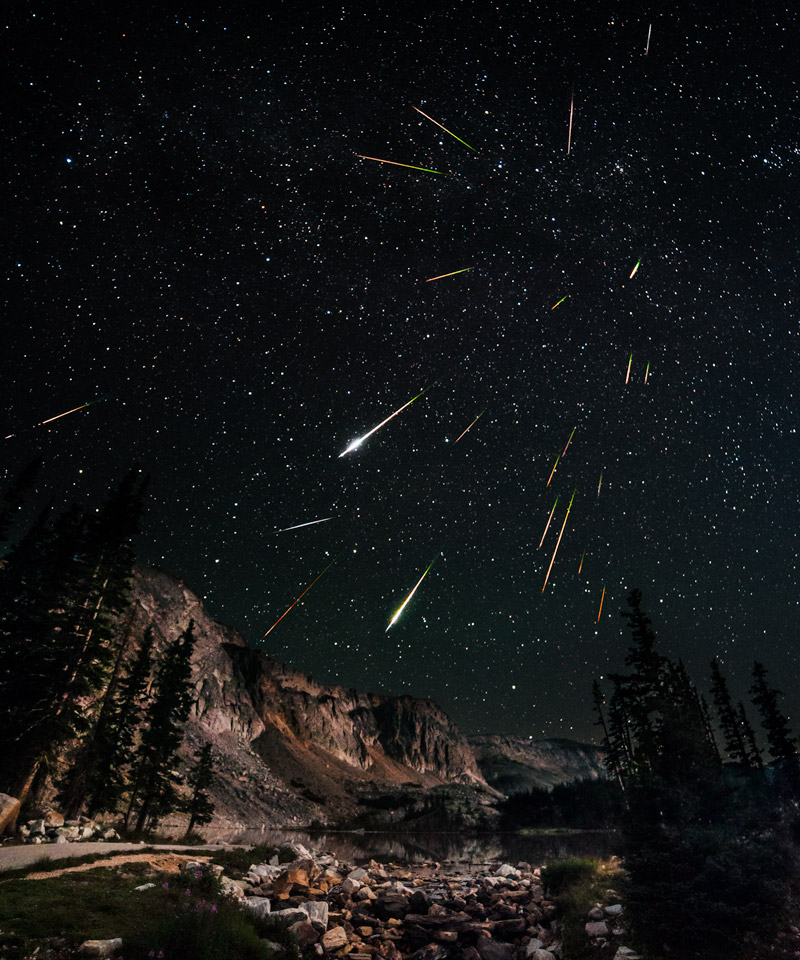
For northern-hemisphere observers, August offers arguably the best month for stargazing. The weather is still warm, but much of the unsettled and humid summer air dissipates and skies become drier and clearer. Observers in the southern hemisphere enjoy warmer weather as winter nears an end, and the center of the Milky Way, the starriest part of the night sky, lies nearly overhead. This year, four bright planets adorn the early-morning sky with one, Saturn, arriving at opposition at mid-month. The great Perseid meteor shower peaks along with the full Moon, but the meteor shower is also visible, with reduced activity, throughout the first half of the month. And the Milky Way and its thousands of deep-sky splendors calls out for patient observation during the evening hours.
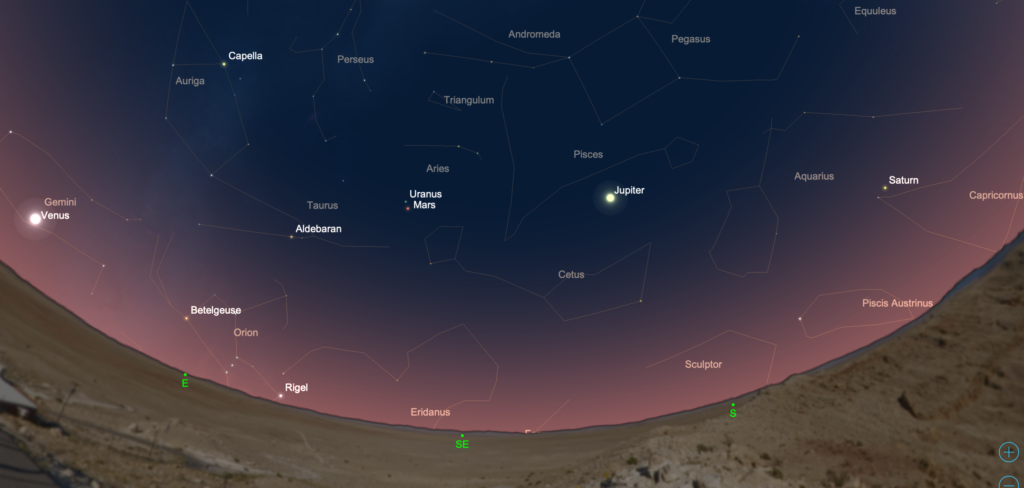
1 August 2022. The first week of August delivers four bright planets in the early morning sky. Look to the southeast to see Venus, Mars, Jupiter, and Saturn in a long east-to-west in the pre-dawn sky.
1 August. If you have a telescope, look for Uranus passing about 1.5o north of Mars this morning and remain close over the next several days. The pair lie about 15 degrees to the right of the Pleiades. Mars shines at magnitude +0.2 and spans about 8.3 arcseconds and continues to grow and brighten. At magnitude 5.7, Uranus spans just 3.6 arcseconds. The pair fit into the same field of view of many telescopes at low magnification. Mars is slowly getting close enough to reveal a bit of detail at higher magnification in steady sky. Also look for the striking color contrast between red-orange Mars and grey-green Uranus.
3 August. The constellation Virgo is setting for the season in the southwestern sky after sunset. Tonight, a waxing crescent Moon sits about 3o from Spica, the constellation’s brightest star
5 August. First Quarter Moon, 11:07 UT
11 August. Look to the southeast (or to the east in the southern hemisphere) to see a full Moon rising with Saturn with just 5o separating the pair.
12 August. Full Moon, 01:36 UT (the ‘Sturgeon Moon’)
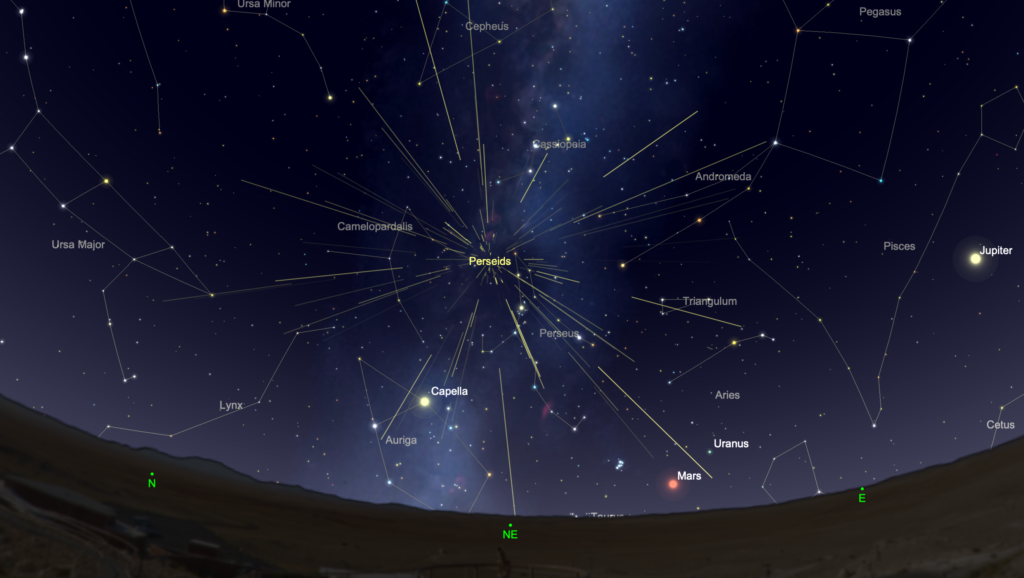
12 August. It’s not a great year for the Perseid meteor shower as it arrives with the full Moon to wash out all but the brightest meteors. But the Perseids are a prolific and long-lasting meteor shower that arrives at a pleasant time of year for northern-hemisphere observers, and it offers enough bright meteors to make for an impressive display, even in moonlit skies. The shower peaks at 19h UT on August 12. But you can see Perseids from late July through the third week of August, so have a look for meteor activity before and after the full Moon arrives. Perseids can appear anywhere in the sky. These meteors have been observed for at least 2,000 years as the Earth passes through dust left in the wake of Comet 109P/Swift–Tuttle.
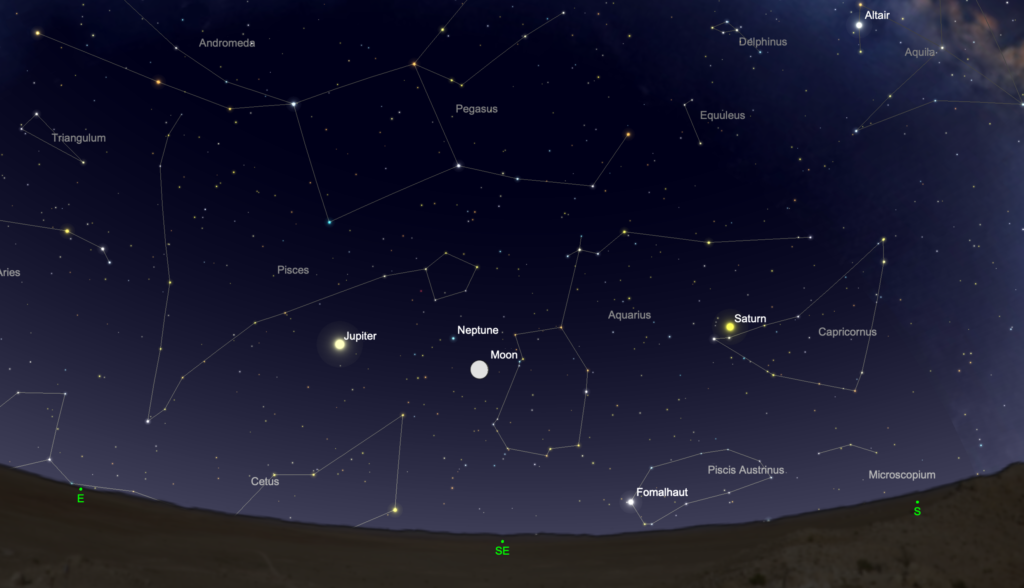
14 August. Saturn reaches opposition and rises in the southeast as the Sun sets in the northwest. The marks the planet’s closest approach to Earth this year at a distance of 1.324 billion kilometers. At a peak brightness of magnitude +0.3, Saturn is easily visible to the unaided eye in eastern Capricorn all night. The planet remains in the evening sky for the rest of the year. Saturn still lies about 15 degrees south of the celestial equator in 2022, so northern observers need nights of good seeing to get the best view of the planet and its rings. At opposition, the rings span about nearly 44 arc-seconds at a tilt of about 13 degrees. The planet’s disk spans some 19 arc-seconds. Even a pair of binoculars, and certainly a small telescope, show Saturn’s largest moon, Titan, with its thick, orange, nitrogen and methane atmosphere.
15 August. Look for a waning gibbous Moon just 2o from rising Jupiter in the eastern sky before dawn. The biggest planet is already fat and bright and continues to grow and brighten on its way to opposition late next month.
19 August. Last Quarter Moon, 04:36 UT
19 August. Look for the last quarter Moon, Mars, and the Pleiades rising within about 6o of each other in the eastern sky before dawn.
24-25 August. Look for Venus, low in the east, rising with a slender crescent Moon. Venus is slowly working its way towards the eastern horizon after a long morning apparition in 2022.
27 August. New Moon, 08:17 UT
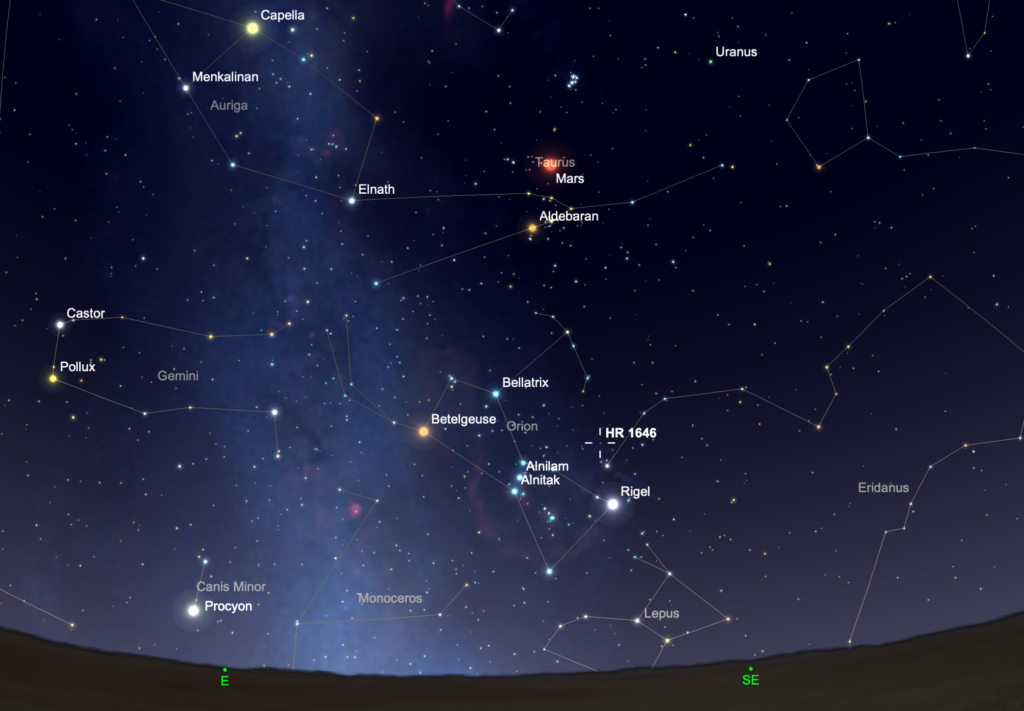
30 August. Mars continues to linger in the constellation Taurus and this morning, in the eastern sky before dawn, lies between the Pleiades and Hyades star clusters.